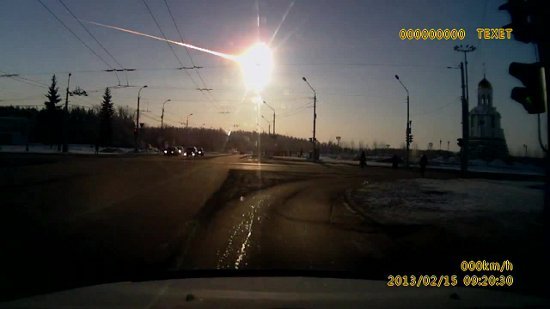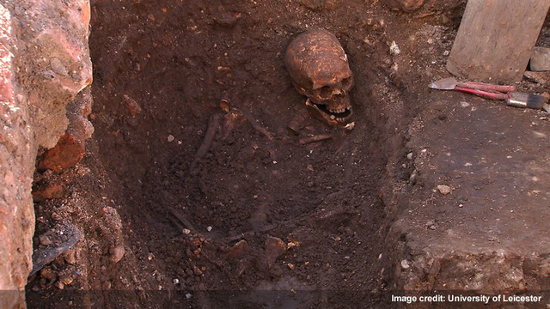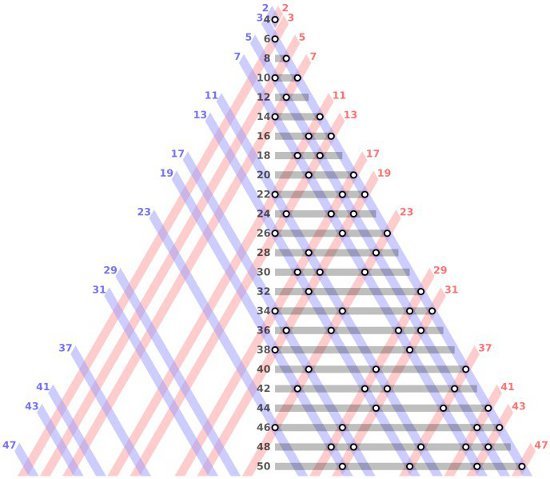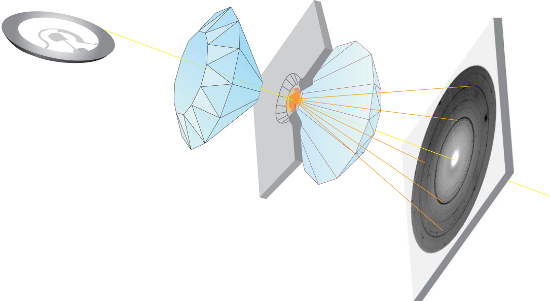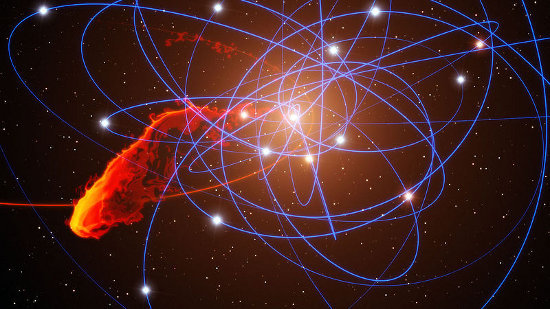
Here are five science stories that I found intriguing during 2013. I don't mean to imply that these necessarily represent the most important discoveries, rather, these are simply stories that, for one reason or another, caught my attention more than others.
1. Great Ball of Fire.
On the morning of February 15, an asteroid that penetrated the Earth's atmosphere unnoticed (Figure 1), exploded above the Siberian town of Chelyabinsk. The resulting shockwave shattered windows, destroyed buildings and injured more than 1,500 people. This was a relatively gentle reminder of the dangers posed by asteroid impacts. For this reason, NASA has an Automatic Near-Earth Asteroid Collision Monitoring System called SENTRY in place.
Figure 1. Chelyabinsk meteor explosion. Credit: Wikimedia Commons.
2. My Kingdom for a Horse!
While excavating in a parking lot in Leicester, England, archaeologists hit the jackpot. They uncovered what has by now been confirmed to be the skeleton of one of Shakespeare's most memorable characters -- King Richard III (1452–1485; Figure 2). The conclusive proof (following radiocarbon dating) that this was indeed the correct identification came from comparing the DNA extracted from a tooth to that of two living known matrilineal descendants of the king's eldest sister. I am sure that this news excited anyone who has ever seen Sir Lawrence Olivier's portrayal of this apparently ruthless king.
Figure 2. The skeletal remains of King Richard III. Credit: University of Leicester.
3. Yes, Prime Minister.
The "Goldbach conjecture" is one of those famous problems in mathematics that has already awaited its solution for more than a quarter of a millennium (since 1742). The conjecture states that every even integer greater than 2 can be written as the sum of two primes (integers divisible only by 1 and themselves; Figure 3). For instance, 18 = 7 + 11. The conjecture has been shown to be true for numbers up to four million trillion, but a general proof remains elusive.
On May 13, 2013, a Peruvian mathematician working in France, Harald Helfgott, took an important step towards a proof. He released two papers in which he appears to have proved what is known as "Goldbach's weak conjecture" -- that every odd integer greater than 7 can be expressed as the sum of three primes. While the road from this proof to a complete proof of Goldbach's conjecture is still long, Helfgott's work (if fully confirmed) does represent major progress.
Figure 3. The even integers from 4 to 28 expressed as a sum of two primes. Goldbach's conjecture states that every even integer greater than 2 can be expressed in this way. Credit: Wikimedia Commons.
4. Some Like It Hot.
In his pioneering attempts to calculate the age of the Earth (in 1862) Lord Kelvin had to estimate the temperature in the Earth's deep interior. He took that to be in the range of 7,000–10,000° Fahrenheit. Today we know that understanding phenomena such as the Earth's magnetic field and processes related to geothermal activity require knowledge of the Earth's core temperature. The Earth has a solid inner core, composed mainly of iron, and a liquid outer core that is also iron rich. The temperature at the boundary between the two is expected to be the melting temperature of iron at enormously high pressure. In 2013, a French research team studied the melting of a piece of iron held between two diamonds at a pressure of 200 gigapascals (Figure 4). They found a melting temperature of 10,754° Fahrenheit, almost 2,000° hotter than previous estimates!
Figure 4. Iron melting at high pressure between two diamonds. A thin beam of synchrotron X-rays is used to detect whether solid iron has started to melt. This changes the crystalline structure, in turn modifying the "diffraction pattern" of deflected X-rays behind the sample. Credit: ESRF/Denis Andrault.
5. Feeding the Monster
A cloud of gas and dust, called G2, is falling onto the central supermassive black hole at the center of our Milky Way galaxy. The black hole, called Sagittarius A*, has a mass of 4.3 million times the mass of our Sun. In April 2013, astronomers already started to see the effects of stretching that the cloud is experiencing, due to the black hole's intense gravity. Figure 5 shows an artist's impression of those effects. Astronomers will continue to closely monitor the Galactic center in 2014, since we rarely get a ringside seat for such close encounters.
Figure 5. Artist's impression of the cloud of gas and dust G2, falling onto the black hole at the center of our Galaxy. Credit: ESO.
